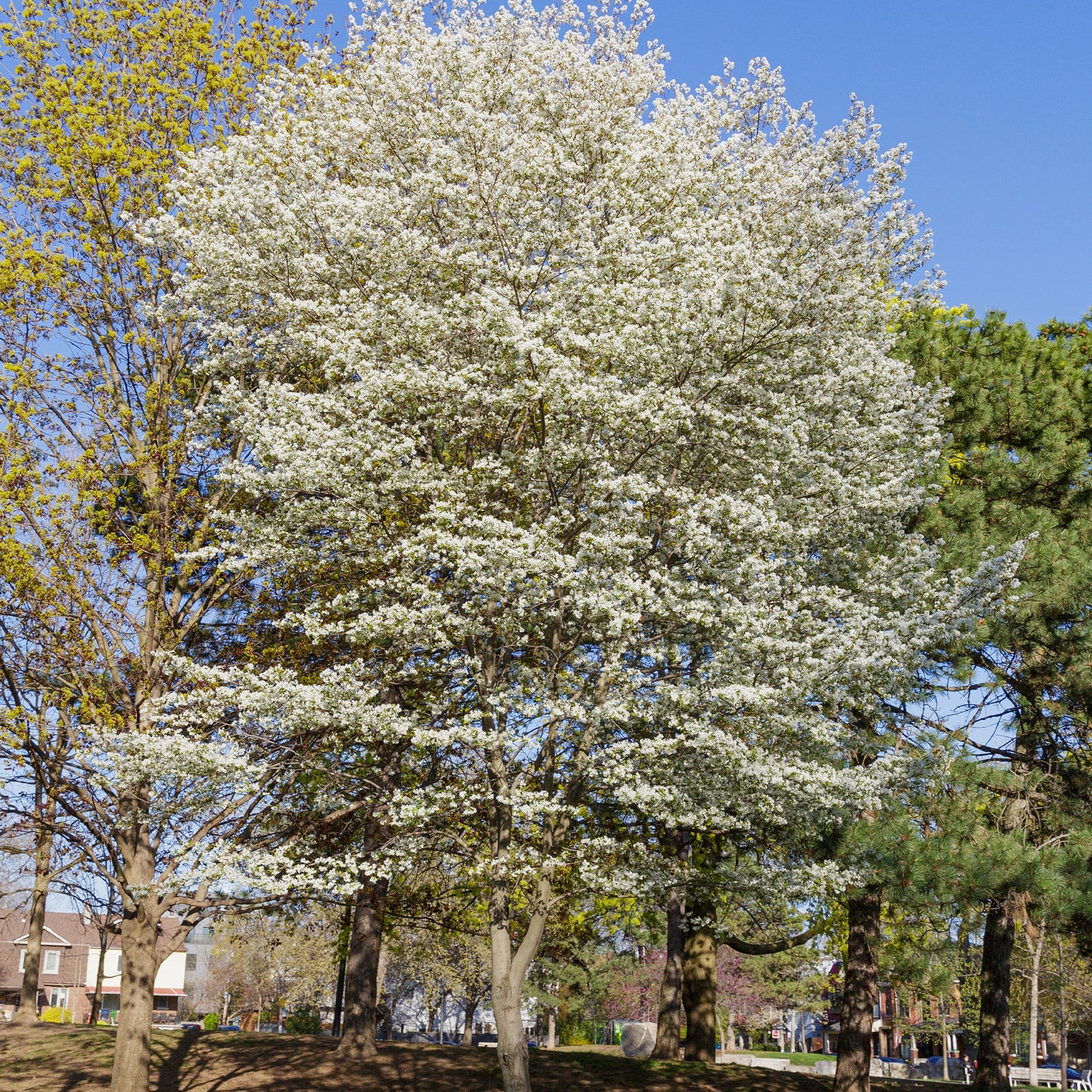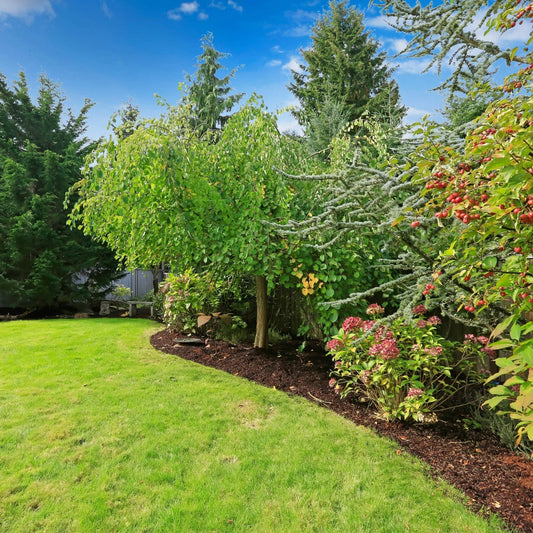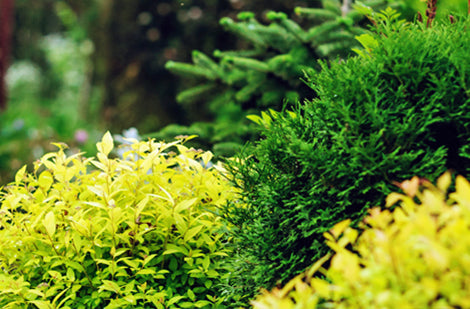Amelanchier canadensis
Amelanchier canadensis - Canadian Serviceberry
Amelanchier canadensis - Canadian Serviceberry
Exposure
- Sun
- Part-sun
- Part-shade
Rusticity
Bloom time
- April
- May
- Abundant spring white blooms
- Sweet edible berries
- Superb fall colour
- Native and very hardy plant
- Attracts birds and pollinators
Discover the Serviceberry (Amelanchier canadensis), a native shrub of exceptional beauty that will enchant you every season! It stands out with its spectacular spring bloom in clusters of delicate white flowers, followed in summer by delicious sweet and edible berries. In autumn, its foliage transforms into a flamboyant display of reds and oranges. Extremely hardy and easy to care for, this shrub attracts birds and pollinators, making it a valuable and natural addition to any landscape design.
Characteristics
- Foliage : The foliage is deciduous, composed of finely toothed oval leaves, an attractive dark green in summer. Young leaves may have a slightly purplish tint. In autumn, it offers a spectacular colouring ranging from orange to vibrant red and purple.
- Bloom : In very early spring (April-May), before or just as the leaves emerge, the shrub becomes covered in a profusion of small, delicate white flowers grouped in loose clusters. This spring bloom is short-lived but has a great visual impact.
- Light : Thrives in full sun to partial shade. Sufficient sunlight promotes better fruiting and more vibrant fall colours.
- Habit : Its habit is shrubby to a small multi-stemmed tree, with an upright form and often a rounded to spreading crown.
- Growth : Its growth is considered moderate to fast. It reaches a mature height of 3 to 6 metres (10 to 20 feet) and a width of 2 to 4 metres (6 to 13 feet).
- Humidity : Requires soil that remains moderately moist but well-drained. It tolerates some drought once established.
- Soil : Adapts to a variety of soil types, but prefers cool, well-drained, and slightly acidic soils.
- Temperature : Extremely hardy. It is adapted to cold winters and can withstand very low temperatures.
- Watering : Requires average watering. Water regularly during establishment. Once well-established, it is drought-tolerant, but appreciates regular watering during prolonged dry periods.
Uses
- Types of Use : Ideal as a specimen plant for its multi-seasonal interest, in shrub mass plantings, in native gardens or wildlife gardens, as an informal hedge, or for erosion control on slopes. It's an excellent choice for woodland or naturalized gardens.
- Decorative Advantages : Offers visual interest throughout the year: white spring flowers, summer green foliage, red/purple berries in summer, and a magnificent fall colouring. Attracts a wide variety of birds and pollinators, adding life to your garden. The berries are edible and can be consumed fresh or used in cooking (pies, jams).
Care
- Fertilization : Light fertilization in spring with a balanced shrub fertilizer is generally sufficient, especially for young plants.
- Pruning : Minimal pruning is needed to maintain shape and remove dead or crossing branches. The best time to prune is after spring flowering. Remove suckers (shoots from the base) if you desire a more tree-like form.
- Planting :
- Distance : Space plants approximately 2 to 4 metres (6 to 13 feet) apart to allow for their full development. For a dense hedge, reduce spacing slightly.
- Depth : Plant the root ball at the same level as the soil in the original container.
- Period : Spring or fall are the best times for planting.
Plant details
Dimensions
Dimensions
Characteristics
Characteristics
Habit:
- Bushy
- Spreading
Flowering colours:
- White
Plant needs
Plant needs
Watering:
- Tolerates drought after implantation
Maintenance:
- Easy
Soil requirement:
- Well drained
- Fertile
Features
Features
Resistance:
- Drought
Attract:
- Birds
- Pollinators
Use:
- Open Ground
- Isolated
- Clumps
Attribute:
- Produces edibles berries


Related articles
-

Trees and shrubs for small space landscaping
Read the articleHaving an exceptional garden is possible, even in the city! Discover our selection of trees and shrubs perfect for small lots, and transform your outdoor space into a green oasis.
-

When and how to plant shrubs: successful planti...
Read the articleDiscover our complete guide to mastering shrub planting and care. Learn the best planting times, essential techniques, along with tips for watering, fertilizing, and managing common issues. Our practical advice...
-

Choosing shrubs to plant
Read the articleIn exterior design, shrubs represent furniture. They set the scene and set the tone for the flower bed. Shrubs constitute the living architectural elements of the landscaped garden. As proof,...
-

Shrubs: beautiful all year long
Read the articleLe grand choix d’espèces fournit l’occasion de varier les formes, les feuillages, et de créer des floraisons successives, bref, de composer un jardin magnifique à longueur d’année. Pour toutes ces...










